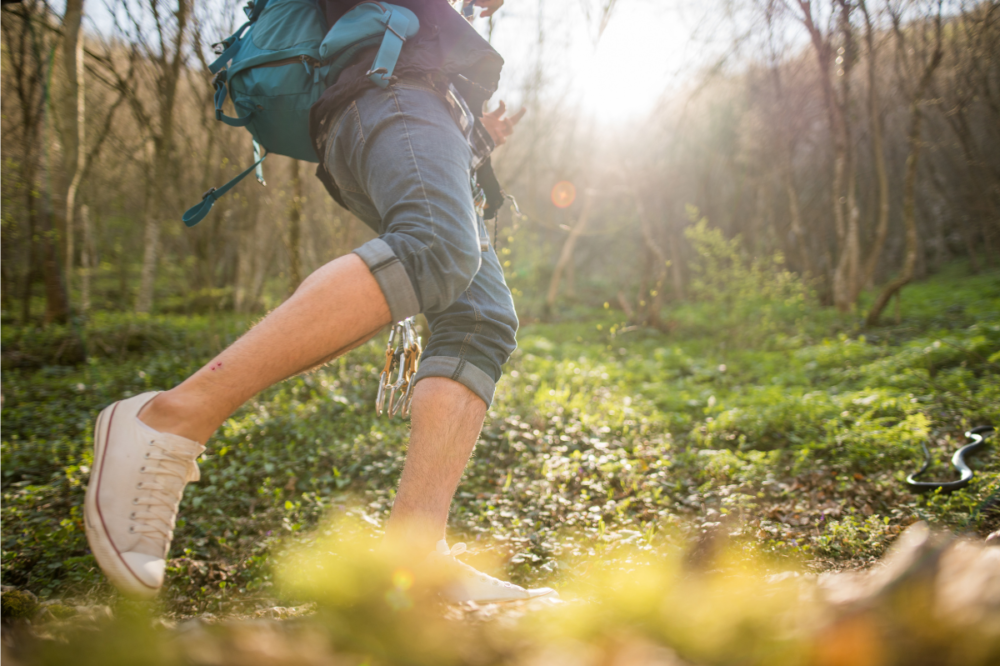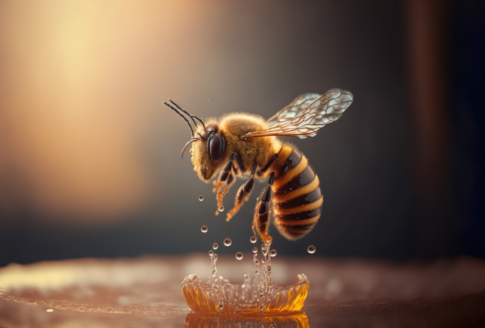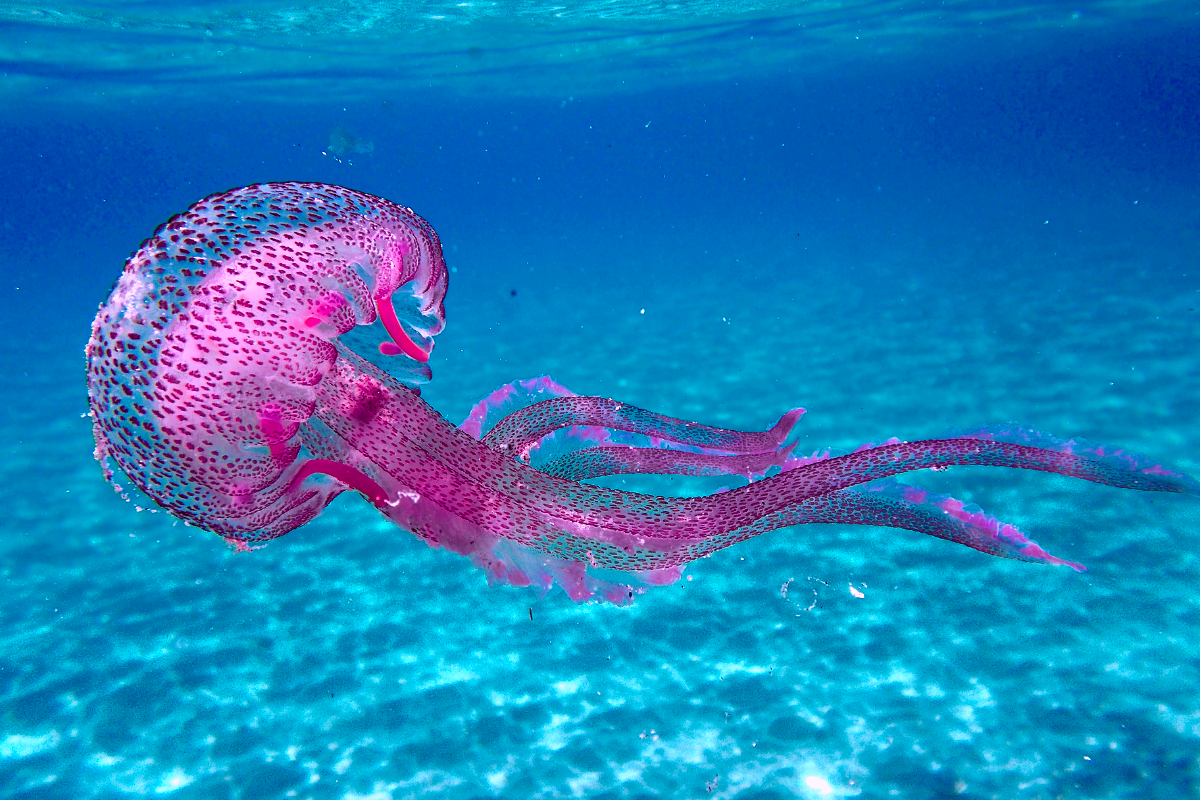Snake bite: what to do

A walk in the countryside or some agricultural work, sometimes may have unpleasant results. The snake bite is one of them and is accompanied by worry and panic.
Of course, we know that not all snakes are the same or dangerous. [1] Although there are 3,500 species of snakes, luckily only 200 are venomous. [2] In Greece there are 7 species of snakes, while only 5 species of vipers are dangerous. [3]
How dangerous is their bite? What should we do if we suddenly see a snake in front of us and how should we deal with a possible attack?
Here are some helpful tips to protect yourself.
Table of Contents
How dangerous are snakes in Greece?
As we mentioned, it is important to realize that not all snakes are the same! Although they are present in many rural areas of our country (especially in the summer months), they do not jump out to bite if they are not in a position of defense. This means that if they are not threatened or scared, they are less likely to bite us. [1]
How dangerous a bite is, is linked to:
- The toxicity of the poison
- Its concentration in the victim’s body
- The endurance of each organism
The only reptile that has a dangerous bite in Greece is the viper. In our country, up to 200 people are bitten every year (according to Hellenic Statistical Authority – ELSTAT data). However, from 2000 to 2014, only 6 people died due to viper bites and most of them had serious medical history.
When vipers are noticed, they try to move away immediately. If approached, they curl up in a defensive position. At this point, they warn the person or animal that they are ready to bite if they do not move away immediately. [1]
In total, in Greece there are 23 different species of snakes and the following are considered dangerous: [7]
- Viper – Vipera ammodytes
- Ottoman Viper – Montivipera xanthina
- Milos viper – Macrovipera schweizeri
- Common European viper – Vipera berus
- Meadow viper – Vipera ursinii
In addition to the viper, European cat snake (Telescopus fallax) and Eastern montpellier snake (Malpolon insignitus) also have venom and exist in Greece. But these have poison in their back teeth, so it is very difficult to transfer poison to a human. [4] [7]
Snake bite symptoms
The effect of the poison is linked to two categories: Local and generalized symptoms. Their difference is that the generalized ones refer to the case where the poison is absorbed by the victim’s body. [6]
Local symptoms are: [6]
- Pain
- Edema
- Bruises
- Blisters that expand over a few hours
Generalized symptoms are: [6]
- Vomiting
- Weakness
- Dizziness
- Chills with fever
- Sweating
- Bleeding
- Tachycardia
- Hypotension
- Shock
- Pulmonary edema
- Acute renal failure
In addition to the above, there are certain species of reptiles, amphibians and arthropods that can cause allergic symptoms. As a precaution, you can contact your doctor for an allergy test. [8]
First aid for snake bite
Follow the easy steps below if you come across a potential victim. It is important to keep calm and go to a hospital immediately, having done the following. [3] [6]
- We calm down the victim
- The victim must not move so that the poison is not transferred
- We remove any jewelry, belts or clothing near the area, because it will swell
- We keep the area with the bite still, lower than the heart level
- We can clean the wound with soap and water or antiseptic
- If the bite is close to the neck, we keep an eye on breathing (if we know first aid) [9]
What we don’t do
- We do not press the bite area
- We do not put ice on the bite [2]
- We do not self-medicate [3]
- We do not use a knife/scalpel on the wound to remove the poison [9]
- We do not consume alcohol [3]
In general, poisonous snakes in our country are not as dangerous as we often think! By keeping calm and following the instructions of the experts, the bite can be easily treated if you go to the nearest hospital immediately. [8]
But how do we recognize if the bite is dangerous or not? Identification can be done both by observing the snake and by the bite itself. [9]
- If the bite shows just rows of teeth, the snake is probably not poisonous.
- If 2 large stings stand out in the bite, either as part of a row of teeth or on their own, the snake (and therefore the bite) should be treated as venomous.
Is there an antidote for viper bites?
According to the instructions given in the first aid manual of the National Center for Emergency Care in Greece (EKAB), the severity of poisoning depends on the following factors: [6]
- Age
- General state of health
- Bite position and depth
- Possible movement of the victim
If you or a loved one is bitten by a viper, you should keep calm and follow the tips below. You will recognize the viper’s bite by the two characteristic marks it leaves. [5] It is important to immobilize the victim (especially the limb) and get the person to hospital immediately. There, it is the right place to give him first aid. [1]
Snake bite in a child: what to do
If the snake bites a child, the kid feels intense pain that has a burning sensation. The area has localized swelling and needs special attention, as if we do not act immediately, even necrosis of the limb may occur. Other symptoms that may be caused are: [2]
- Drowsiness
- Muscular weakness
- Muscle paralysis
- Numbness of lips or head
It is important to recognize whether the snake that bit the child is poisonous or not. However, since you will rarely see the snake still enough to photograph it, you can follow the instructions below: [2]
- Immediately immobilize the child to reduce the move of the poison in the vessels.
- Lightly tie the bitten limb to limit blood flow to the veins. Be careful not to tie the knot tightly. Also, remember to loosen and retie the bandage every 15-20′ as the area will swell.
- Don’t waste time removing the poison as it doesn’t help.
- Take the child to the nearest hospital.
Extra Prevention & Action Tips
- We wear hiking boots and long pants if we walk in nature [1]
- We do not put our hands in places of nature with hollows, bushes and holes [1]
- If we see a snake in our house, we take a picture of it and call the police or the fire department [1] Don’t try to kill it as it might attack you.
- Garlic and onion do not repel snakes [4]
- Oil and gasoline have not been proven to repel snakes [4]
- Carry a snake first aid kit with bite protection pump
Conclusion
Snake bites are not as common as we think and are extremely rare in Greece. Even if the bite was from a poisonous snake, there is enough time to take the victim to the hospital and his/her life will not to be in danger. By following the simple instructions of the experts, we have many chances to intervene immediately and help the victim, until they transfer to a hospital structure.
For more information, you can contact the Poison Control Center. It operates all days and hours, giving information and instructions on the phone 210 7793777.
At Vita4you.gr you will find a Snake Rope 60 m., an ecological non-toxic product, which does not allow snakes to enter! It can be placed in yards, cottages, campsites, around any dangerous place
References:
Disclaimer
The content of this blogspot is not and can not be considered as medical advice, diagnosis or treatment. All information is provided to readers solely for informational purposes. There is no intention to substitute this content for personalized medical advice, diagnosis, prognosis or treatment.





Leave a comment